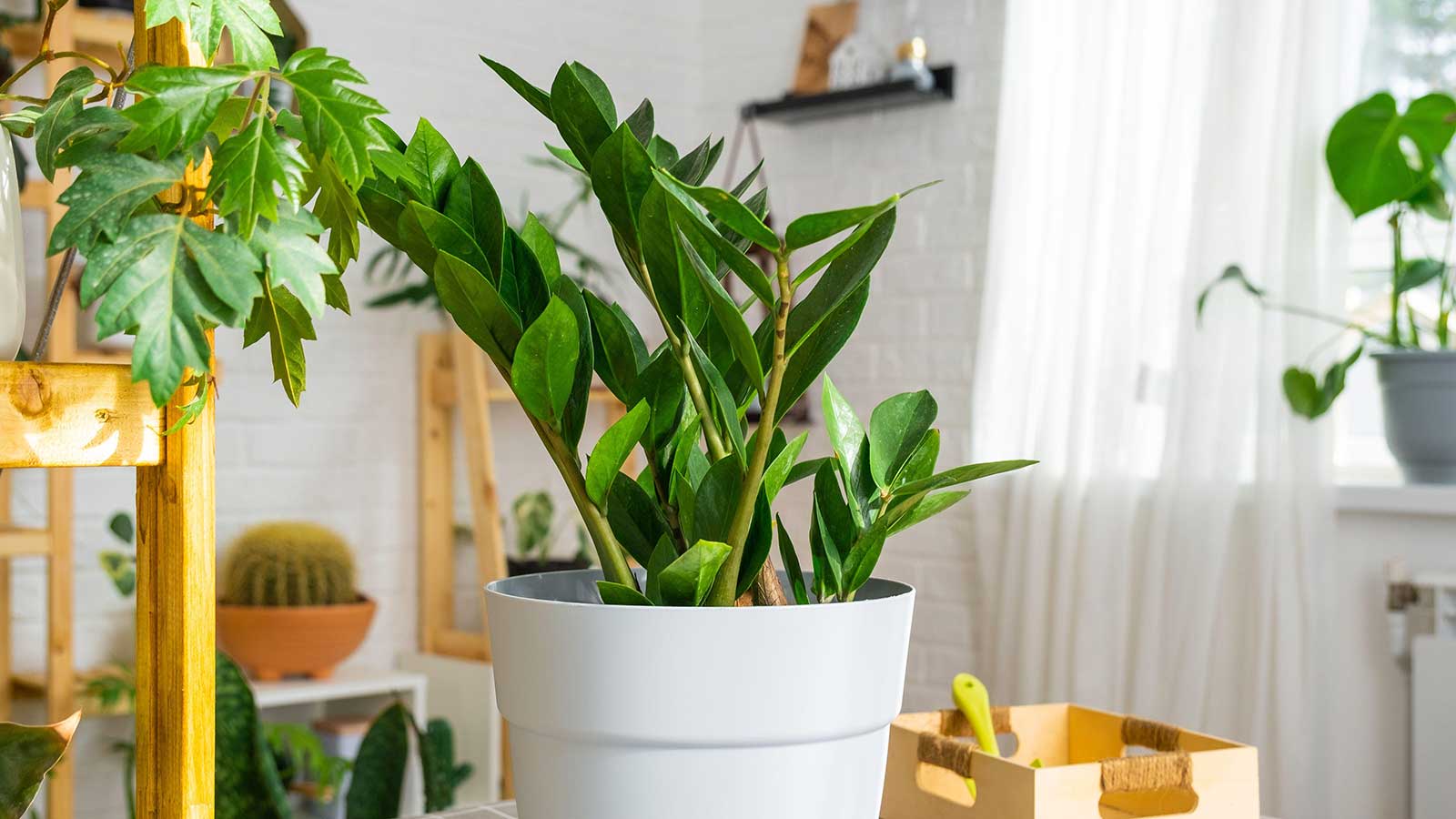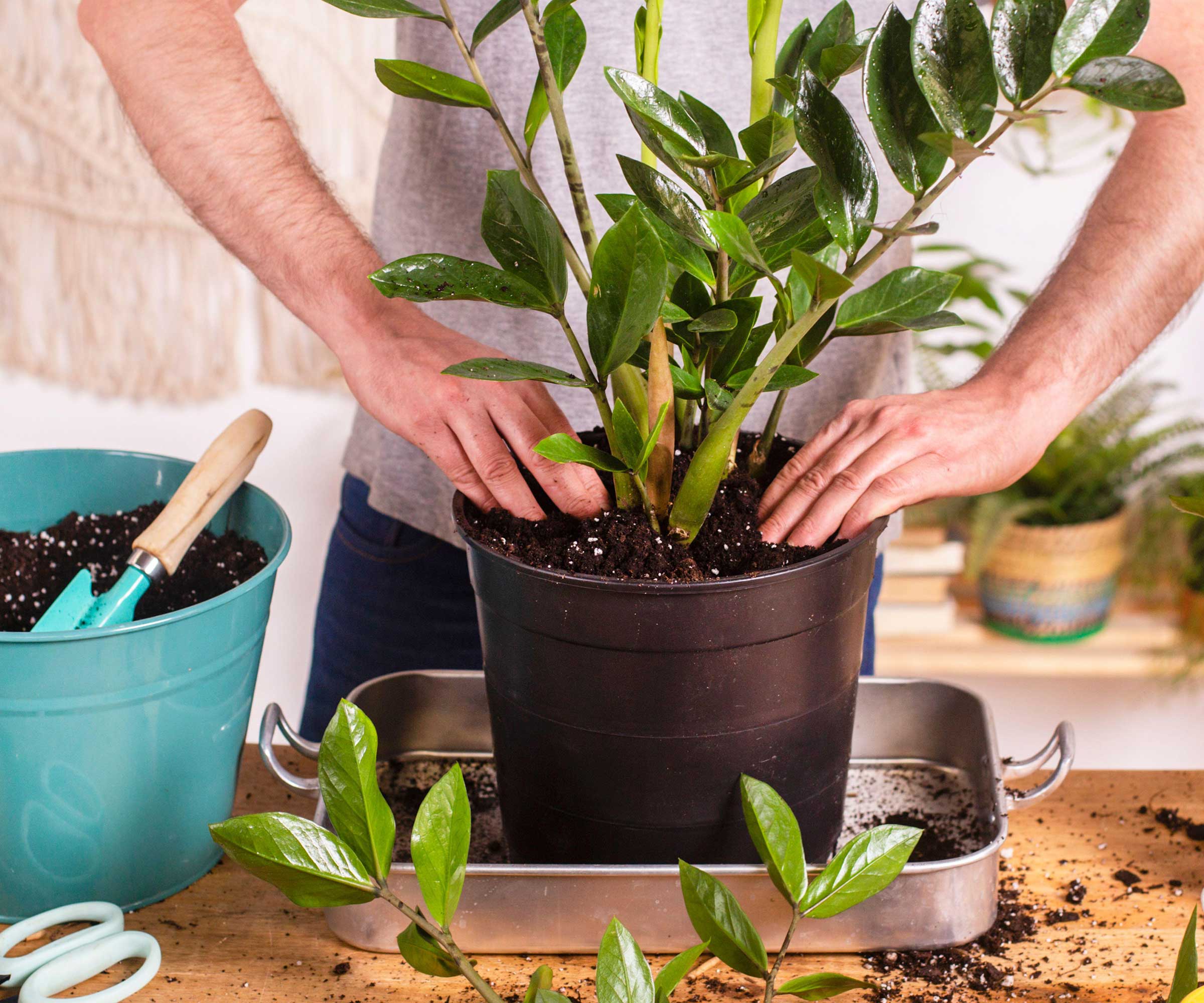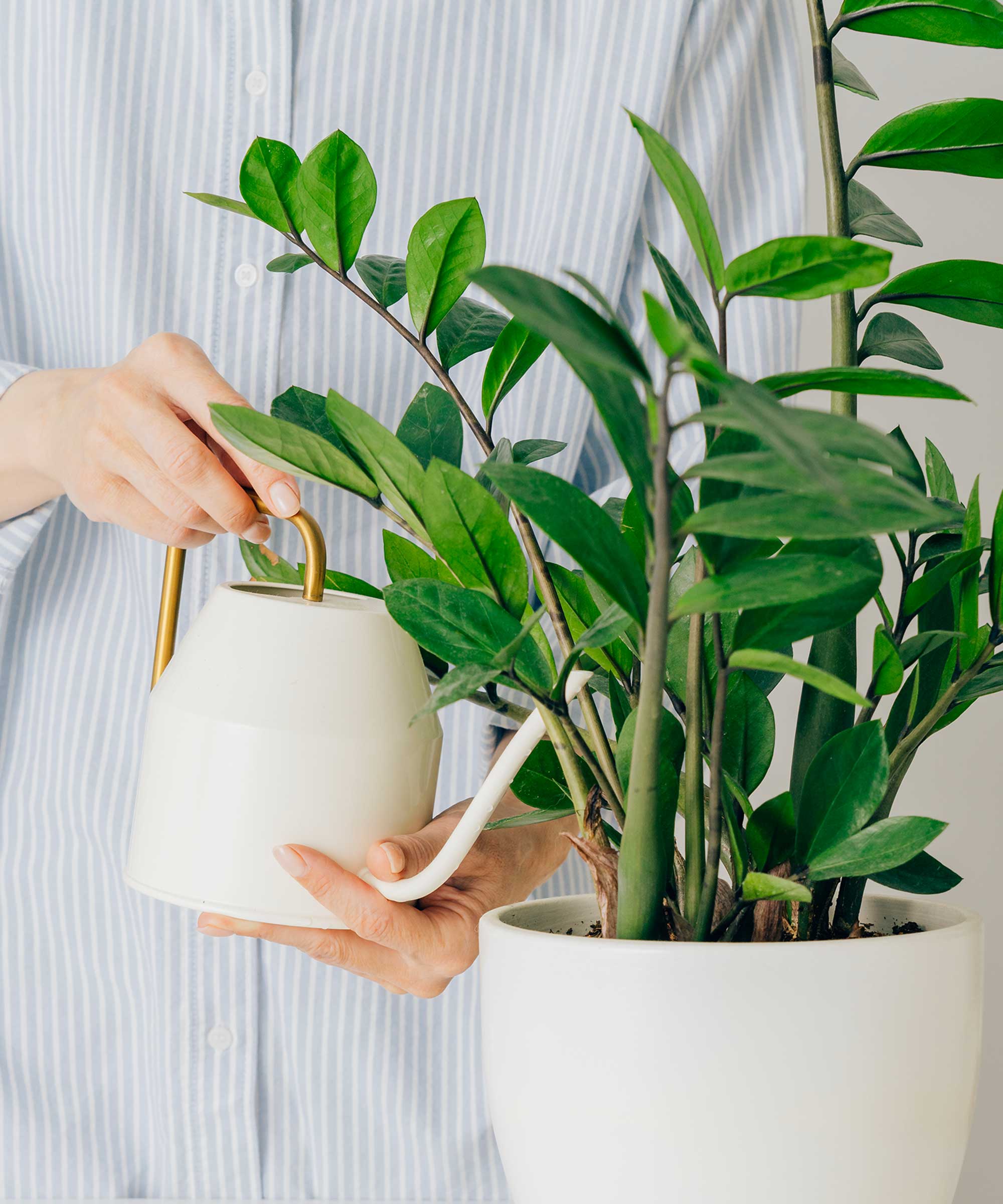ZZ plant care – 3 essential tips for these on-trend houseplants
The experts share their growing advice for these glossy indoor plants


Zamioculcas zamiifolia, or ZZ plants for short, are having a bit of a moment. These glossy foliage plants are popular not just for their good looks, but also because they're a cinch to look after, making them perfect for beginners and experienced indoor gardeners alike.
While they're native to Africa, slow-growing yet showy ZZ plants aren't too fussy about their surroundings, and make an excellent desk companion or addition to a living room shelf. However, like all easy-care houseplants, there are a few things you can do to help them truly thrive.

ZZ plants have attractive, glossy leaves
3 essential care tips for ZZ plants
Tempted to add a ZZ plant to your indoor collection? Brush up on these pro tips, first, to ensure it stays happy and healthy.

ZZ plants are generally an easy-care plant
1. Use a suitable potting mix
'ZZ plants require well-draining soil to prevent water from accumulating around the roots,' says Kayla Gajdascz of Mental Houseplants. 'A standard succulent and cacti potting mix usually works well.'
Alternatively, she says that you can create your own soil mixture using coco coir, perlite, and orchid bark, at a ratio of 3:2:1.
You can shop perlite from Perfect Plants Nursery.

Kayla Gajdascz is the co-founder and president of Mental Houseplants, a company dedicated to spreading the positive impact that plants have on our mental health. One way that the company does this is by partnering with NAMI, the National Alliance on Mental Illness (the Massachusetts chapter), and donating a portion of every sale to them.

Make sure you use a well-draining mix
2. Water your ZZ plant when needed
'The ZZ plant is a drought-tolerant plant because it has these underground rhizomes that help to store water and energy,' says Paris Lalicata of The Sill.
Design expertise in your inbox – from inspiring decorating ideas and beautiful celebrity homes to practical gardening advice and shopping round-ups.
Kayla recommends watering them only when the soil is completely dry. 'The frequency will depend on the environmental conditions in your home.' Overwatering can lead to root rot, she adds. Not watering this plant correctly can also lead to your ZZ plant drooping.
This small, wood-handled watering can from Terrain is perfect for precisely watering your indoor pots – and it will look pretty on the shelf, too.
If you wish to fertilize your ZZ plant, it is advisable to do so only in the growing season, says houseplant expert Vladan Nikolic (Mr. Houseplant). Use a succulent fertilizer, he adds.
Top tip: Although ZZ plants are tropical plants, they can tolerate lower to normal room humidity in the home, says Paris. However, they will be happier under humid conditions, she adds.

Paris has been with The Sill for almost five years and heads up Plant Education and Community. A self-taught plant expert with over ten years of experience growing houseplants, she currently maintains an indoor garden of more than 200 plants in the northeast. Her passion is making plant care more digestible for budding plant parents and sharing the many benefits of having plants indoors.

Vladan Nikolic, otherwise known as Mr. Houseplant, is a houseplant expert with over 10 years of experience. He is the founder of the houseplant care blog MrHouseplant.com and also an influencer who helps newcomers in the houseplant world become great plant parents. You can find him on Instagram, TikTok, Youtube, Facebook, Twitter and Pinterest.

ZZ plants don't call for constant watering
3. Keep them away from direct sunshine
'ZZ plants can tolerate a wide range of light conditions, from low light to bright, indirect light,' Kayla says. This makes them ideal for those looking for low-light houseplants to brighten their home.
However, 'they will thrive the best in bright light conditions,' says Paris. Just remember to keep them away from direct sunlight, as Kayla points out – this can scorch their leaves.
Top tip: Kayla suggests occasionally wiping the leaves of your ZZ plant with a damp cloth to remove dust. 'This helps the plant photosynthesize more efficiently,' she says.

These plants can thrive in various lighting conditions
FAQs
What are some common problems with ZZ plants?
A common issue is ZZ plants turning yellow, often caused by overwatering. 'Check if the soil is too wet and adjust your watering schedule accordingly,' says houseplant expert Kayla Gajdascz. Brown spots or drooping leaves can also be a sign of overwatering or poor drainage, she adds. 'Ensure the pot allows excess water to escape and that the plant isn't sitting in water.'
Although these plants will tolerate lower light conditions, too little light can result in leggy growth. 'Move the plant to a brighter location with indirect light or supplement with artificial light, so that new growth grows tall and straight,' recommends houseplant expert Vladan Nikolic.
In terms of houseplant pests, Kayla says that ZZ plants are relatively resistant. However, they can occasionally be affected by aphids, mealybugs, or spider mites, she warns. 'Regularly inspect your plant and treat pests with insecticidal soap or neem oil if necessary.'
Should you prune a ZZ plant?
ZZ plants typically don't need pruning, yet there are instances where it can be beneficial, says houseplant expert Vladan Nikolic. For instance, you may wish you remove any dead leaves or stems. Use a pair of clean pruning shears to do so, he says.
Do you need to repot ZZ plants?
'Repotting is rarely needed, as ZZ plants grow well in slightly root-bound conditions,' says Kayla Gajdascz. You should repot a ZZ plant every two or three years is usually best.
What temperature is best for a ZZ plant?
'ZZ plants prefer a moderate to warm environment, ideally between 60-75°F,' says houseplant expert Kayla Gajdascz. Placing houseplants near cold drafts or central heating should always be avoided.
Invest in an easy-going ZZ plant and it may soon become your new favorite in your collection. And if so, it's super easy to propagate these plants from cuttings or by division, so you can enjoy even more of them without extra cost.

Holly started writing about gardening five years ago, and she is a regular contributor to Homes & Gardens. She has also written many gardening features for Woman & Home and Real Homes, too. She has previous experience as a professional gardener, where she helped to plant and maintain private gardens. Holly has also looked after allotment plots over the years and loves to grow her own flowers and veggies from seed. In her spare time, she enjoys visiting local gardens, botanical drawing, and tending to her ever-growing collection of houseplants.